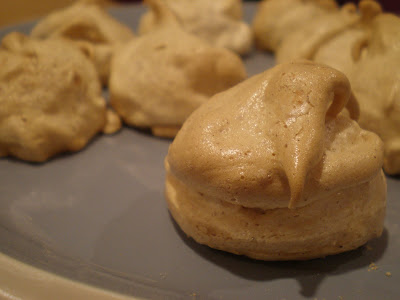
Today, after a nice morning workout, I planned to find a hardware store somewhere near the gym. We've had some potential home accessories sitting around the apartment for a while that I felt could be freshened up by a new coat of paint, and today seemed like as good a day as any to muster up the courage to figure out how to: a) buy paint, b) sand off old, peeling paint, and c) correctly refinish some furniture. Somehow the below-freezing weather didn't deter me, even though I was still wearing my capri gym pants. I'm really silly sometimes.
I found out that there was a Lowe's just a few blocks from the gym, and I jauntily departed. I left brownstone-covered Park Slope and started to feel small among the industrial buildings. Below the train tracks at the Smith and 9th Street F stop, on a sidewalk frozen over and slippery enough to skate on, I spotted a few chairs and a broken mirror. Sitting in the middle of the sidewalk. Ready to be thrown out. I walked past, partly because my calves were getting numb and partly because I was afraid somebody would see me eyeing that old furniture and shoo me away.

I finally made it past lines of sanitation trucks and into the compound of the hardware store. I decided on paint colors, successfully purchased them, and left armed with some extra courage (could it be that the hardware store infused me with some sort of butch bravado while I waited for my paint to mix? Doubtful). Regardless, I made my way, again, below the train tracks, skidded across the icy concrete, and poked with a numb finger at the bottom of a battered old chair. It looked like it had been broken in an Italian restaurant, perhaps cracking atop a mobster's head. I swooped it up beneath my arm and dashed for the train.
It was exhilarating. While I really knew nobody cared if I wanted to go home with a broken, ugly bottom-half-of-a-chair, I felt positively brazen. I finally made it home with my haul, and Mary's eyes widened a bit, like, "Oh, god, what is she bringing home now?" My mischievous grin must have won her over, though, as that half a chair is now sitting against the living room wall, waiting to become something fantastic once again.
. . .
One of the things I like most about this recipe from Bon Appetit's February issue is the fact that it uses the whole beet, greens and all. It's meant to be made with golden beets, but I used the red ones because that was what the Coop had, and I honestly like the sweetness of red beets better anyway. If you use red beets, your whole dish will turn red, including the pasta. Personally, I like that. I think we can all use some more color in our lives, or a fresh coat of paint.

-Kylie




















